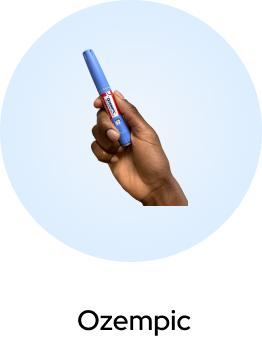You wake up, head to the mirror, and spot another patch of scalp peeking through. Your barber’s been hinting at it for months. Your dad? Bald by 40. You’re not alone.
Hair loss is caused by genetic factors and affects nearly 50% of Canadian men by the age of 50.
But the good news? You have far better options than your dad did.
In 2025, the world of hair loss treatment looks completely different. Hair loss can be treated with medication, as well as with cutting-edge solutions that go beyond pills and foams. What used to be “wait and shave” is now “act and regrow.”
This blog breaks it all down: what causes hair loss, how to prevent it, and the best ways to fight back, right here in Canada.
What Causes Hair Loss?
Hair loss isn’t just about age. It’s a complex mix of genetics, hormones, lifestyle, and even Canada’s environment. Here’s what to know:
Genetics and Male Pattern Baldness (Androgenetic alopecia) – This condition is caused by genetic factors and is associated with DHT sensitivity, a hormone that causes hair follicles to shrink over time.
Hormonal Changes – Your body’s hormone levels shift with age. Testosterone, thyroid function, and stress hormones all play a role. Hair loss is linked to hormonal imbalances, especially as men age.
Stress and Lifestyle Factors – Working late, poor sleep, and skipping the gym? Hair loss is accelerated by stress and lifestyle factors. The body responds to chronic stress by pushing hair into a “resting” phase, which leads to excessive shedding.
Nutritional Deficiencies – In Canada, where sun exposure is limited for much of the year, Vitamin D deficiency is common. Add low iron or biotin levels, and you’ve got a recipe for thinning hair. Hair loss is impacted by diet and nutrition, especially during long winters.
Medical Conditions – Autoimmune disorders (like alopecia areata), thyroid disease, and even severe scalp infections can cause rapid hair thinning. Many of these conditions are often diagnosed by dermatologists through blood tests and scalp exams.
Environmental Factors – Hair loss is influenced by seasonal shedding patterns, and harsh Canadian winters don’t help. Dry air, indoor heating, and low humidity all weaken hair strands. Not sure if you’re actually losing hair or just shedding? Check out our guide on hair loss vs. shedding to tell the difference.
How to Prevent Balding in Men and Directions for the Future
Prevention starts early. If you’ve noticed shedding, you might still be in the “salvage zone.” Here’s how to slow or stop it.
Daily Hair Care Tips
- Maintain natural oils by washing your hair 2-3 times a week
- Use a moisturizing shampoo to combat Canada’s dry climate
- Avoid blow-dryers, hot tools, and harsh styling products
Proper washing and scalp care can slow hair loss and support healthier growth, especially when paired with the right products.
Lifestyle Changes for Hair Loss Prevention
- Eat more whole foods and lean proteins
- Supplement with Vitamin D, iron, and biotin
- Reduce stress through workouts, therapy, or even better sleep
Hair loss is closely tied to your hormonal balance and overall wellness. Your hair’s condition often reflects what’s happening inside your body.
How to Stop Hair Loss and Balding: Effective Treatments in 2025
If you’re already seeing a receding hairline or thinning crown, you’ve got options and better ones than ever before.
Medical Treatments
In 2025, the most effective treatments for male hair loss remain finasteride and minoxidil—both Health Canada-approved and clinically proven to slow genetic hair loss and support regrowth.
What’s New in 2025?
- Combination formulas like minoxidil + tretinoin to boost absorption and results
- Oral minoxidil, now available by prescription through Jack Health, offers a convenient and effective alternative to topical formulas
- Advanced diagnostics like scalp imaging tools are helping providers track progress with greater precision.
Hair loss is being studied in 2025 by Canadian researchers, focusing on improved hormone blockers, DHT sensitivity, and more personalized treatment plans.
If you’re considering minoxidil, it’s important to understand:
- How it works
- Potential side effects
- What a typical hair growth journey looks like
You can access Jack Health’s personalized hair loss treatments entirely online, with discreet delivery, free consultations, and ongoing support from licensed providers.
Natural and Home Remedies
Prefer a natural approach? Try rosemary or castor oil for scalp massage, collagen and saw palmetto supplements, or derma rolling to boost circulation and follicle activity. Results vary, but pairing these with medication can enhance effectiveness.
Advanced Hair Restoration Procedures
Looking for results beyond products? Today’s tech makes hair restoration safer and more natural than ever.
FUE and FUT transplants offer minimal scarring and realistic results. Laser therapy caps boost regrowth with light, while PRP therapy uses your blood to stimulate follicles—most effective when started early.
These treatments are backed by clinical trials and available at male wellness clinics across Canada.
Key Takeaways
- Hair loss is more common after age 30, but early action = better results
- Modern treatments in 2025 are discreet, effective, and accessible through telehealth
- Jack Health provides proven, Health Canada-approved solutions without the waiting room
Frequently Asked Questions
Can Hair Loss Be Completely Reversed?
Hair loss may be reversed with early intervention, but not all types are 100% curable. That said, treatments like Minoxidil regrow hair in up to 60% of users, and transplants boast success rates over 90%.
How long does it take to see results from hair loss treatments?
Minoxidil typically reduces shedding within 6–8 weeks, with visible regrowth occurring in 3–6 months. Expect fuller, thicker hair with continued use. Finasteride typically shows results in 4–6 months, helping slow hair loss and boost regrowth over time. Consistency is key. Daily use delivers the best results.
How can I tell if my hair fall is normal or excessive?
Losing 50–100 hairs per day is normal. If you’re seeing noticeable thinning, bald patches, or clumps in the shower, it may be time to act.
Does the Canadian climate affect hair loss?
Absolutely. Cold, dry winters can cause breakage, dryness, and seasonal shedding. Climate change is a concern in men’s wellness clinics across Canada.
What percentage of men lose their hair?
Over 40% of men experience visible hair loss by age 35. That number jumps to 65% by age 60. Hair loss is prioritized in 2025 telehealth plans for men’s health.
What vitamins am I lacking if my hair is falling out?
Vitamin D, biotin, and iron are the big three. Deficiencies in these can slow hair growth and weaken follicles.



















 (US)
(US)



